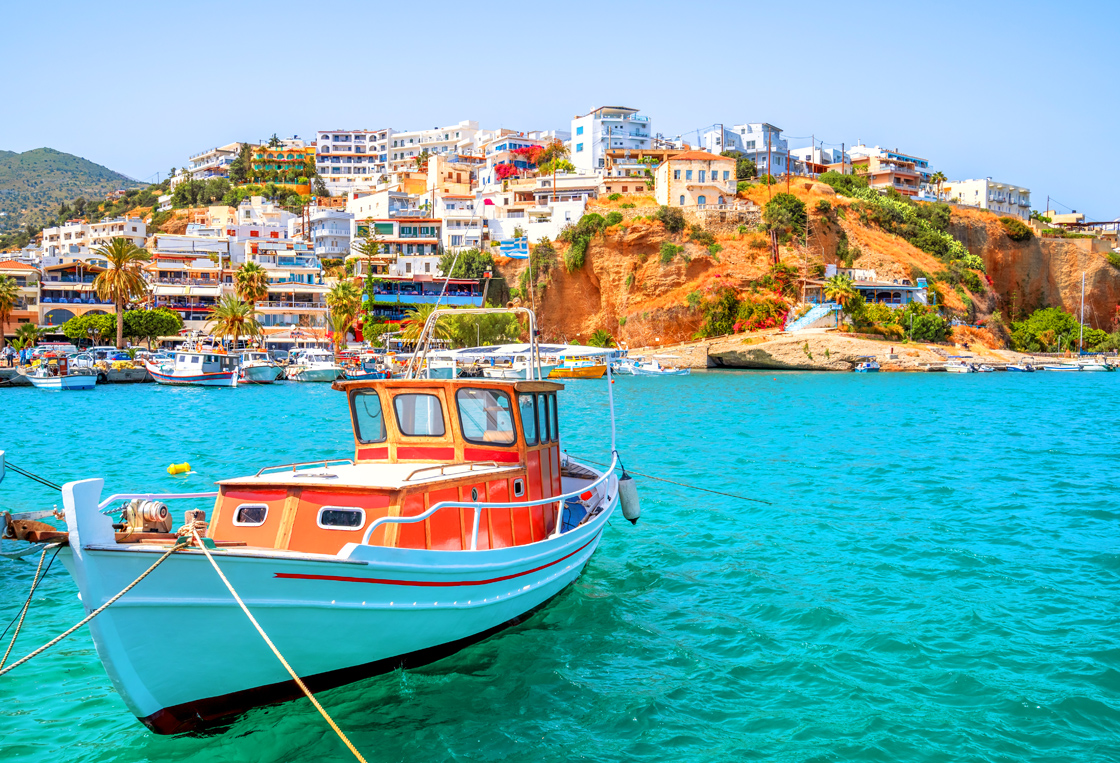
Rethymno
Rethymno town
Rethymno is the third largest city of Crete with a population of approximately 30,000 inhabitants, built on the site of ancient Rethymno (4th-5th century BC). After the Byzantine era, Rethymnon was fortified even more by the Venetians. The Old Town of Rethymnon is one of the most beautiful attractions for a visitor of Crete, who has the opportunity to wander into the past. The city with its picturesque alleys and beautiful monuments preserves the urban fabric as it was formed during the Venetian and Turkish periods.
Near the old town upon the picturesque alleys with gardens and perfumes, the visitor deserves to see the largest fortress in Crete, the majestic fortress of Fortezza. Also, other attractions are the small Venetian harbor, the lighthouse, the Venetian Loggia, the Rimondi fountain, the Municipal Garden, the Lady of the Angels, the Historic Rethymno, the Neranje Mosque, the Church of St. Francis, the Great Gate, the mosque of Kara Moussa Pasha and the Venetian mansions of Arkadiou Street. Finally, the visitor can enjoy swimming on the endless beach of Rethymno which starts east of the port.
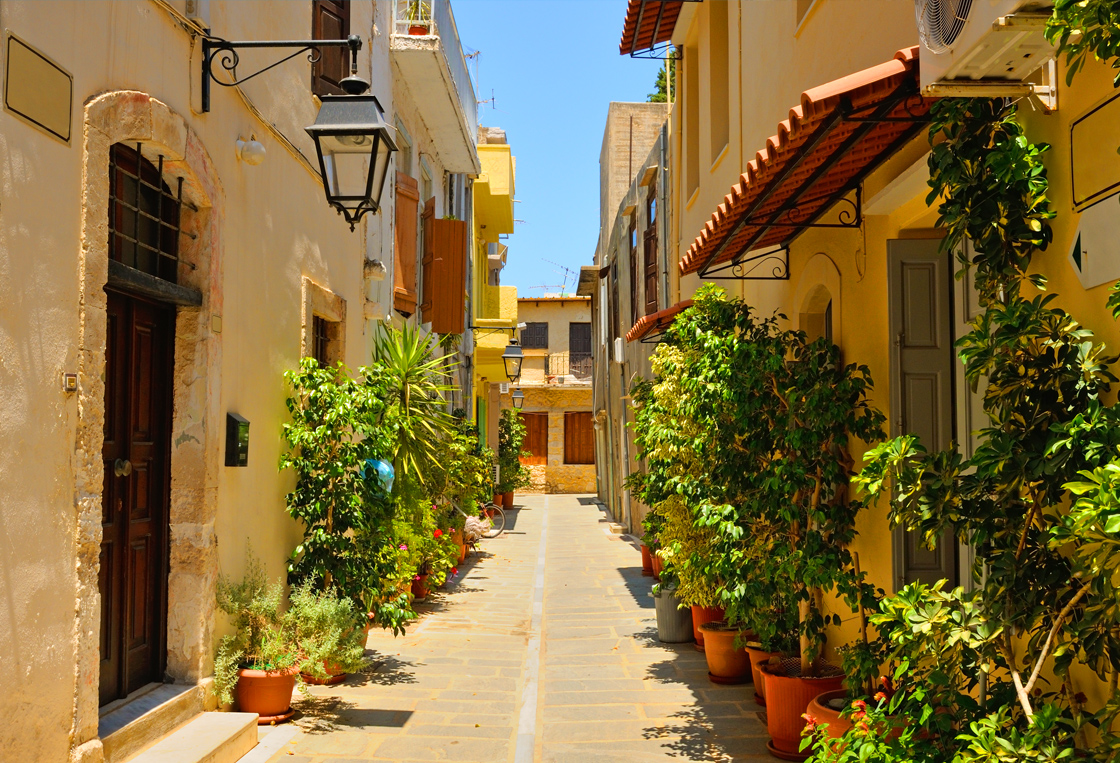
Bali beach
The coastal tourist resort of Bali is located in a large bay 30km east of Rethymnon and 43km west of Heraklion. It is ideal for quiet holidays, for families and couples. Bali has four bays in which sandy beaches and green waters form. The beaches are almost always calm as their orientation is west. All are suitable for children and well organized. Also, in the sea there are several springs that cool the water with the largest one Sifuna located a few kilometers to the east. Livadi is the first beach you will encounter as you enter Bali and the largest in the area. It is very well organized, with plenty of services and shops, but less picturesque than the rest. At the eastern end of Livadi are the two bays of Kouskoura, which are not organized and do not gather too many people.
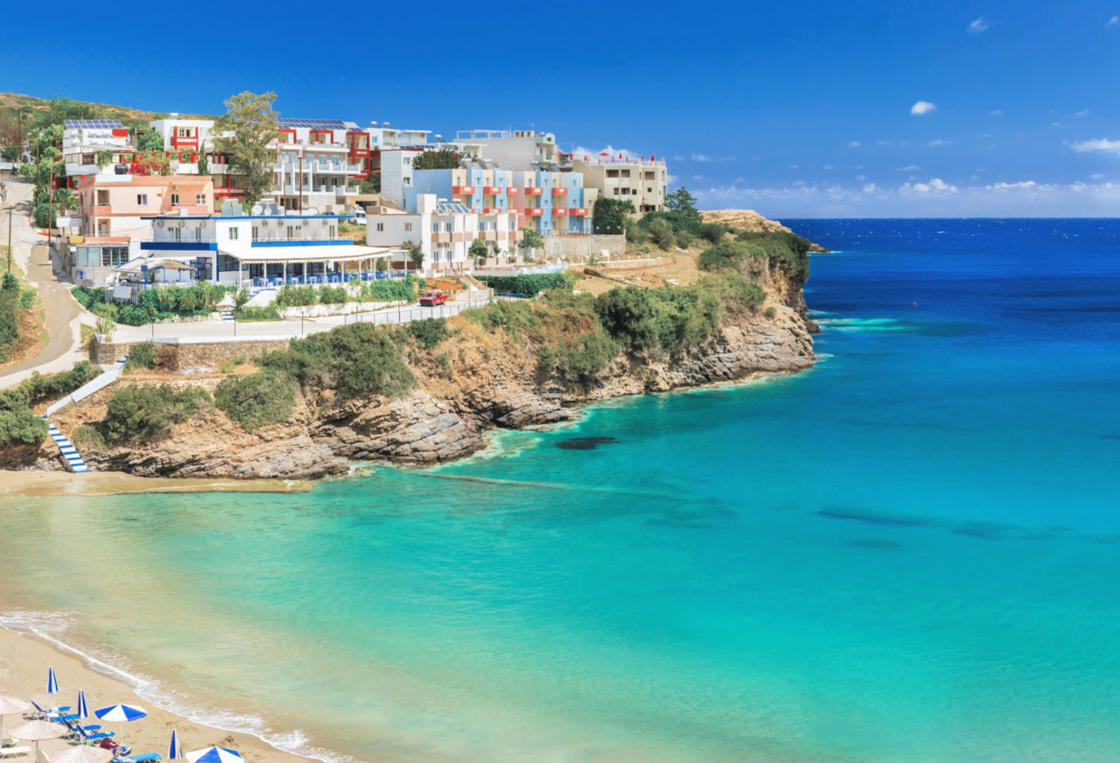
Patsos Gorge
The gorge of Patsos or Agios Antonios is located 8km southwest of Arkadiou Monastery and 30km from the city of Rethymnon, in the green province of Amari. Its waters pour into the impressive lake of the Potamos dam. The canyon up to one point is very easy to traverse as there is a comfortable path laid out by the forest service that ends at the narrowest point with a unique waterfall that falls into a cave. From there on and down, the gorge narrows and forms many waterfalls and in wintertime the descent as a dam of the rivers requires a lot of attention. Another path goes up to the bird watchtower above the river.
The gorge of Patsos is known for the cavernous temple of Agios Antonios, which in ancient times was a cult cave dedicated to the skull of Mercury. Water flows around the rocks, while above the temple flows water that is collected as "sanctification". The thousands of pieces of paper with prayers that the pilgrims have placed on the rocks around the temple are impressive. Below the temple and next to the river, there are large platforms with wooden benches and tables, ideal for a picnic.
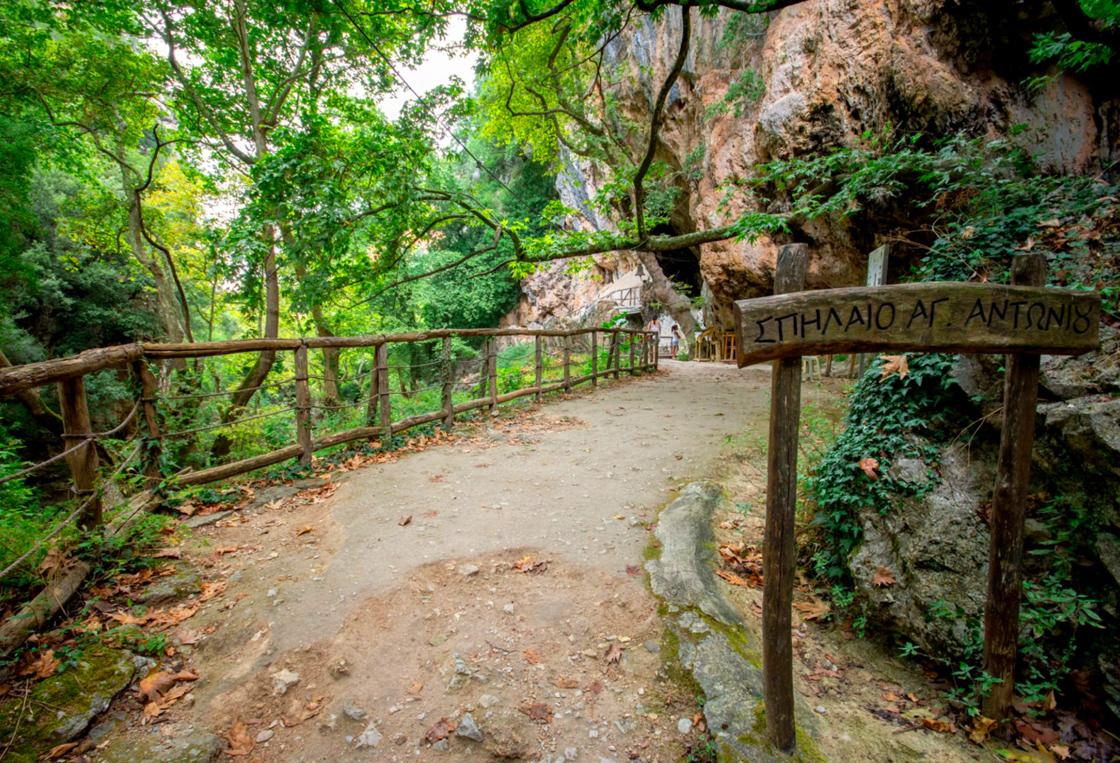
Plakias Beach
Plakias is a popular tourist resort, 36 km south of Rethymno. The main beach of Plakias is located at the mouth of Kotsyfos east of the village and extends for almost 1.5 km to Cape Muri or Psarela. It is a well-organized sandy beach with shallow waters, ideal for families with children. Along the beach there is a promenade with taverns and small hotels. On the beach there are tamarisk trees, umbrellas, water sports, beach volleyball courts, canteens, changing rooms, showers. West of Plakias, from the village to the fishing shelter of Plakias, there is the second beach of Plakias, Skinos. Skinos has sand and lots of rocks, ideal for a mask. Near the village, the beach is organized with umbrellas, while further west it becomes rocky. A beautiful small sandy beach is created right next to the port.
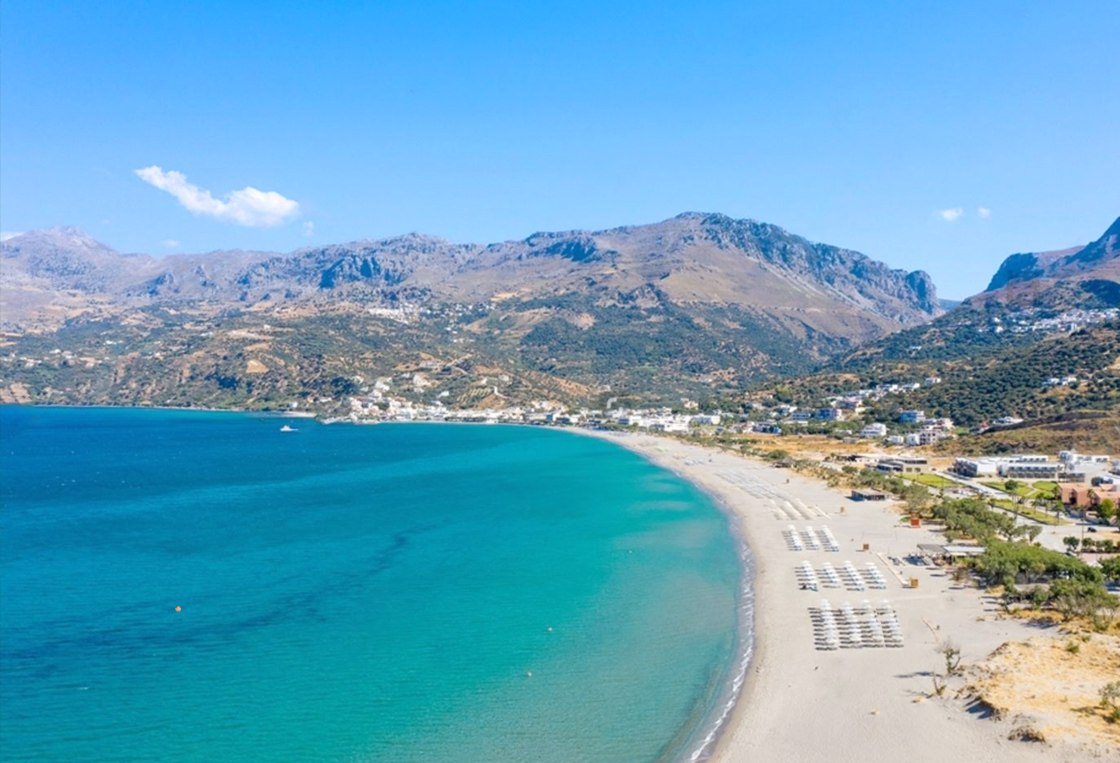
Kourtaliotiko Gorge
The gorge of Kourtaliotis or Kourtaliotiko is located in the south of the prefecture of Rethymno, 22 km from the city of Rethymno and is 3 km long. It is one of the most impressive natural attractions of the prefecture of Rethymno. It starts from the plain of the village of Koxare and flows between the Kuroupa mountains (984 m) and the Koules peak (676 m) of the Dry Mountain. The huge rocky slopes of the canyon reach 600 meters and are full of openings and caves, where important species of avifauna live. The Kourtaliotis River passes through, which originates from the plain of Agios Vasilios, crosses the gorge and empties into the famous Palm Forest of Prevelis after joining the Frati gorge. According to tradition, when a strong wind blows, it creates whistles passing between the hollows of the rocks. Following the steps located on the side of Koxare road, you reach the bottom of the canyon, where the church of Saint Nikolaos of Kourtaliotis and the springs of Kourtaliotis are located. Just below the springs, an amazing waterfall forms with a large flow of water in a very narrow and dark part of the gorge, which can be reached by swimming from a lower level of the river. From there, one can walk down to the bridge of the Great River and then to the sea, splashing and playing all the time with the waters to the beach of Prevelis.
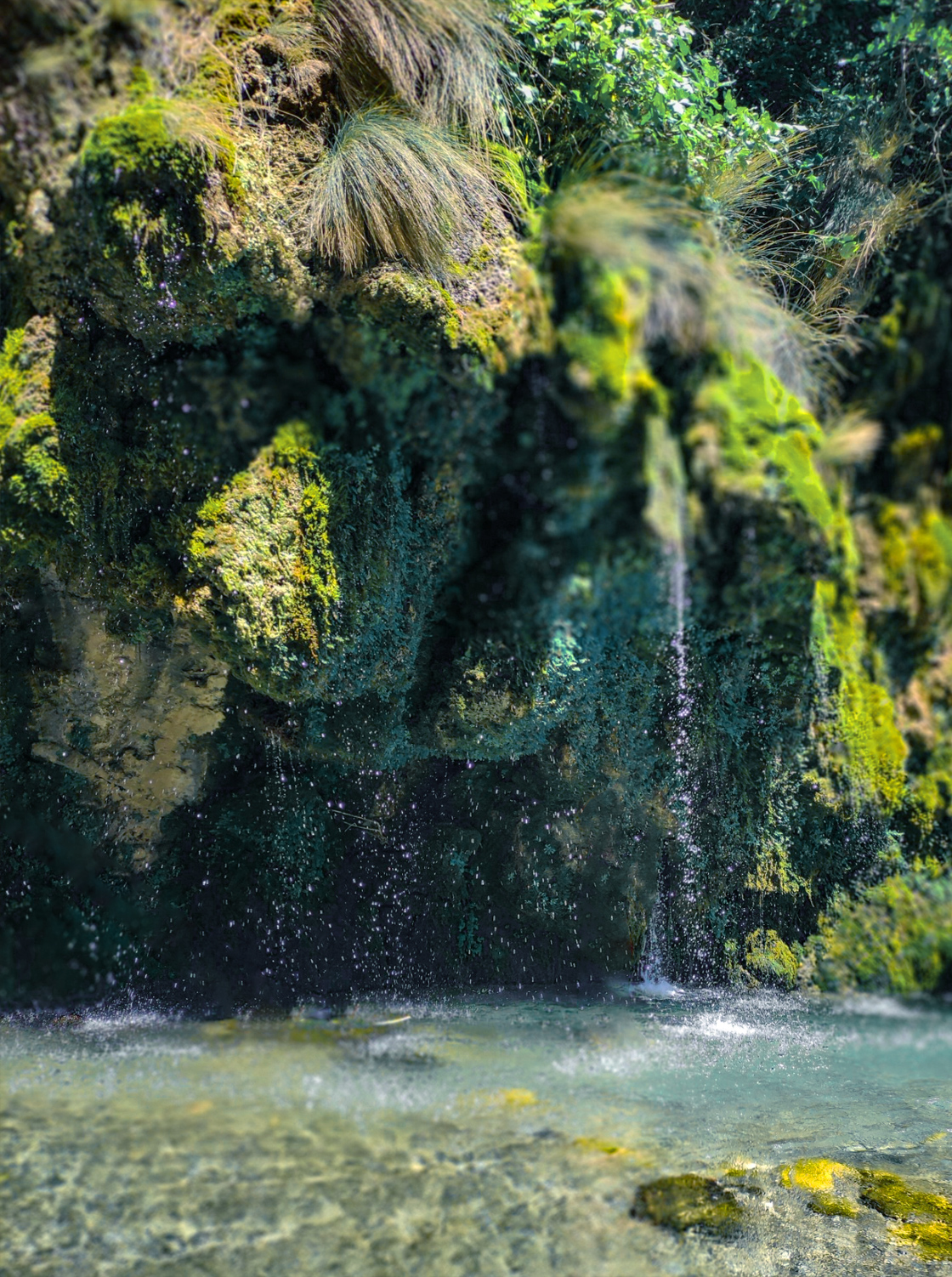
Preveli Beach
The area of Prevelis is located approximately 35 km south of Rethymnon and 10 km east of Plakias. It is one of the most famous beaches of South Crete and receives thousands of visitors every summer. In the past, it was a favorite destination for hippies. On the banks of the Great River, the second largest palm forest of Crete is formed, after the palm forest in Vai, which hosts the endemic Cretan palm tree of Theophrastos. The river forms a small lake 500m long at its exit to the sea with water all year round. You can walk along the river, under the shade of palm trees and other trees, and start climbing up the magnificent gorge. At the exit of the river, a sandy beach is formed with a pebbly bottom and very cool waters due to the river.
The beach itself is nothing special, but it stands out because of the surrounding landscape. In the eastern part of the beach there is an impressive rock in the sea that resembles a mast or a heart called Glymmenos Volakas. Some of the most beautiful spots worth exploring are the sea caves that form after the eastern end. On the other hand, there are two main options to access the area from the land, from the west or from the east. The first is to drive from Plakias to Preveli Monastery. 1.5 km after the Lower Monastery of Preveli, you will stop at the large parking area, where is a path to the beach. The car park is located on top of the towering almost vertical cliffs, west of the beach, where you can take some fantastic photos.
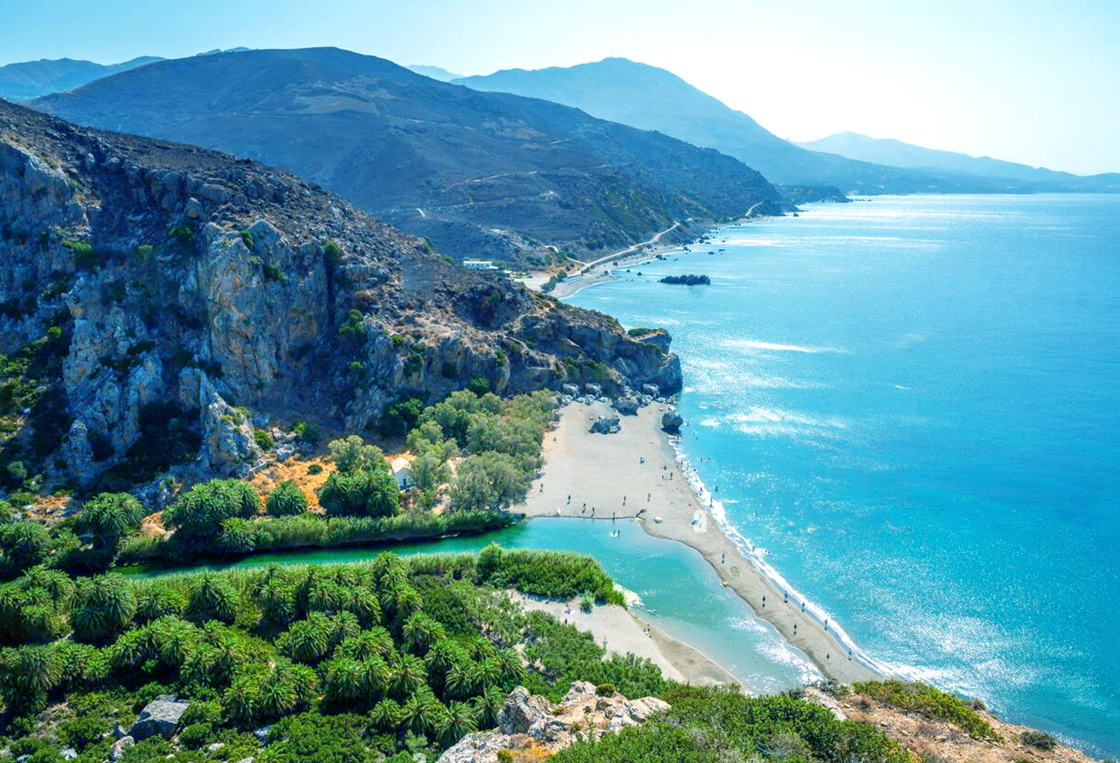
Triopetra beach
Triopetra is located approximately 52 km south of Rethymnon and 13 km southeast of the village of Akoumia. It can be visited by car via a paved road from Akoumia (or from Sakhtouria). Triopetra consists of two beaches, which are separated from each other by a small peninsula. At the edge of the peninsula, in the sea, three imposing rocks stand, from which the area takes its name. The first beach, Mikri Triopetra is formed southeast of the three rocks in a secluded bay with sand and several rocks.
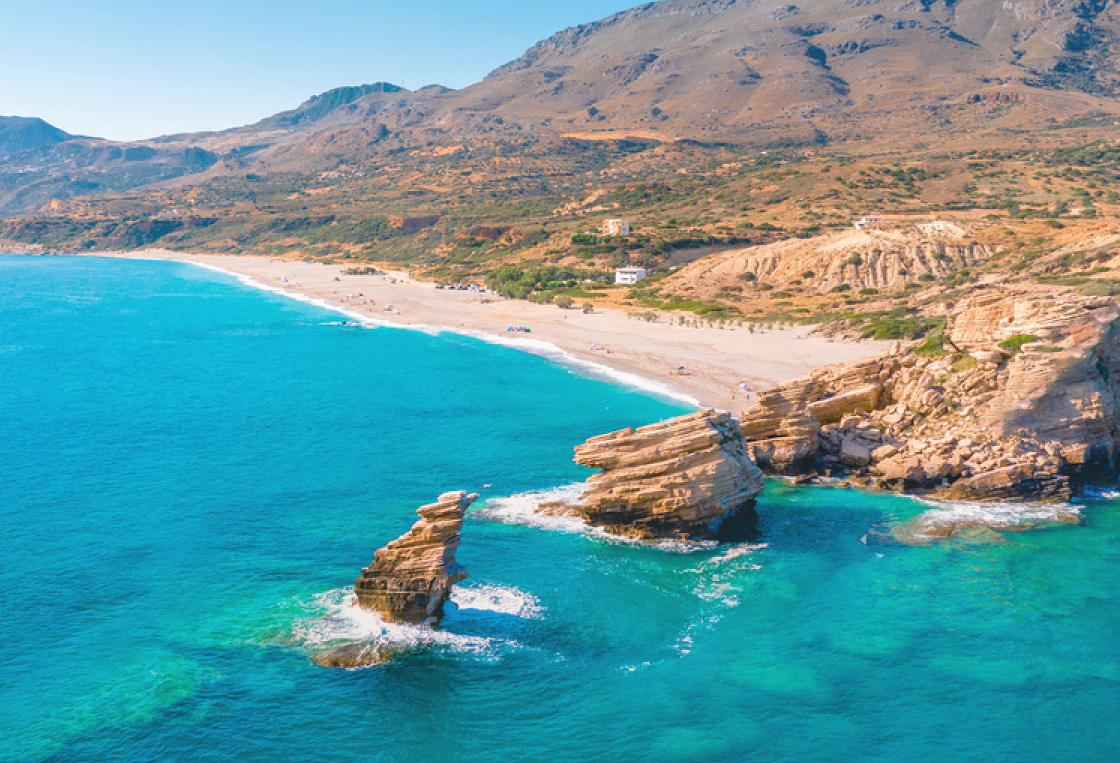
South of the beach there is a small port and a little further on, the Akoumianos Potamos estuary which separates Triopetra from the unique Sand Dunes of Agios Pavlos. The main beach of Triopetra, Megali Triopetra, is formed west of the three rocks, which stretches west for about two kilometers. It has coarse sand and wonderfully deep waters, but its western orientation makes it vulnerable to frequent westerly winds. The eastern part of the beach is a little organized with tavernas, rooms and umbrellas, but it is never too crowded.
Agios Pavlos beach
The coastal settlement of Agios Pavlos is located 58 km south of Rethymno and west of Agia Galini. You can reach this place by asphalted road through the village of Saktouria, in whose district the area belongs. It is a closed sheltered bay with a rocky bottom, which is suitable for quiet family holidays. Nearby there are a few options for accommodation and taverns, while the basic services are provided (umbrellas, sea bikes, etc.).
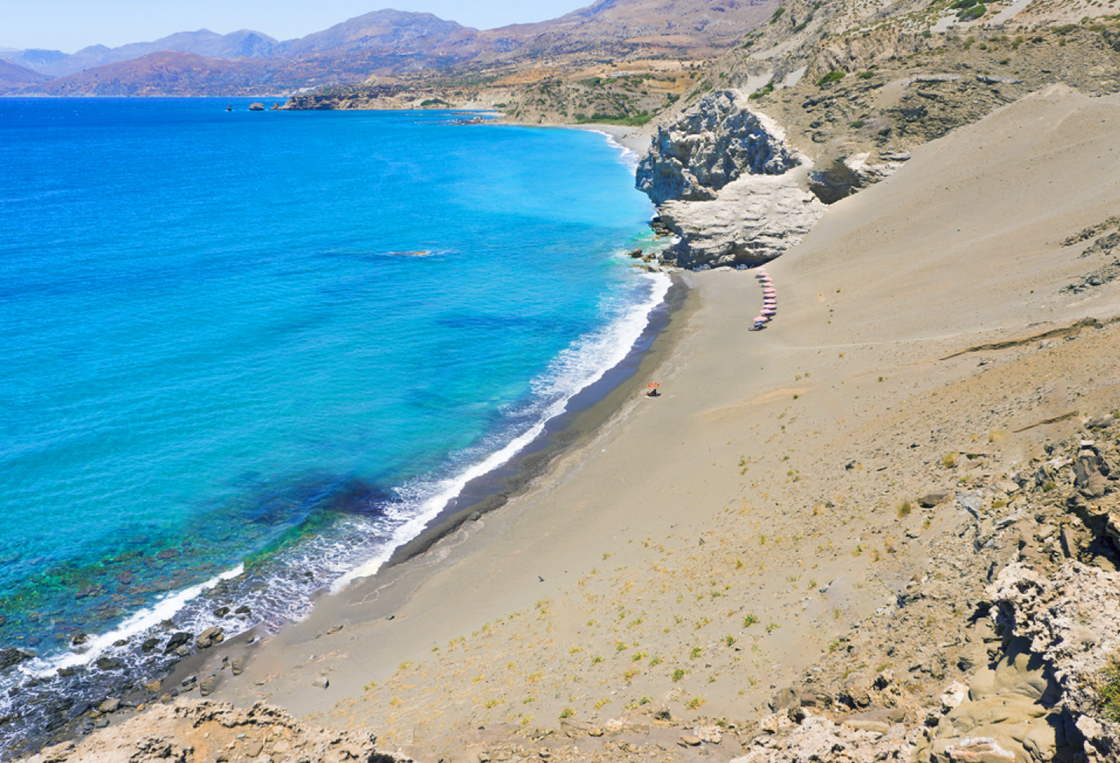
Above the beach there is the church of Agios Pavlos, while in the open sea you can see the two islets of Paximadia. Although the beach in front of the settlement is quite beautiful, many of the visitors use Agios Pavlos as a starting point to discover the nearby idyllic beach of Alatsogremnion with its sand dunes. The beach is located behind the western end of the bay and is one of the best beaches of Rethymnon. You can get there by a stepped path that goes up from the beach of Agios Pavlos.
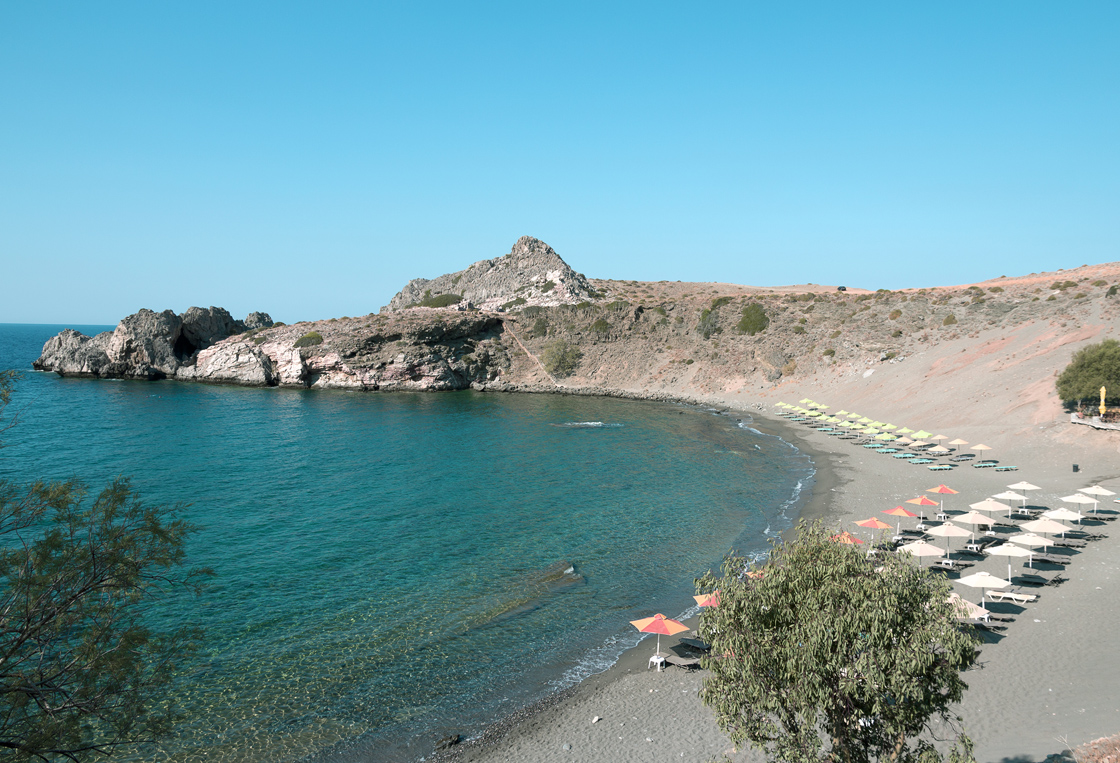
Agia Galini Town
Agia Galini is a popular seaside resort located 61km southeast of Rethymno and 68km southwest of Heraklion. Agia Galini with its beaches, small harbor, the village with the picturesque narrow streets, taverns and shops, attracts many tourists every year. Today Agia Galini is a modern tourist resort which provides all comforts to its visitors.
In the village you will find many options for accommodation, food, entertainment, medical services, post office, banks, shops, etc. Agia Galini is built on the slopes of Lavrastou, next to the mouth of the river Platis, which flows through the valley of Amariou and has water all year long. A few kilometers northeast of the village rise the southern edges of Psiloritis, with its wild and imposing slopes and with many traditional villages hanging on them. West of Agia Galini, along the coastline, there are wonderful steep caves, which can only be visited by boat.
